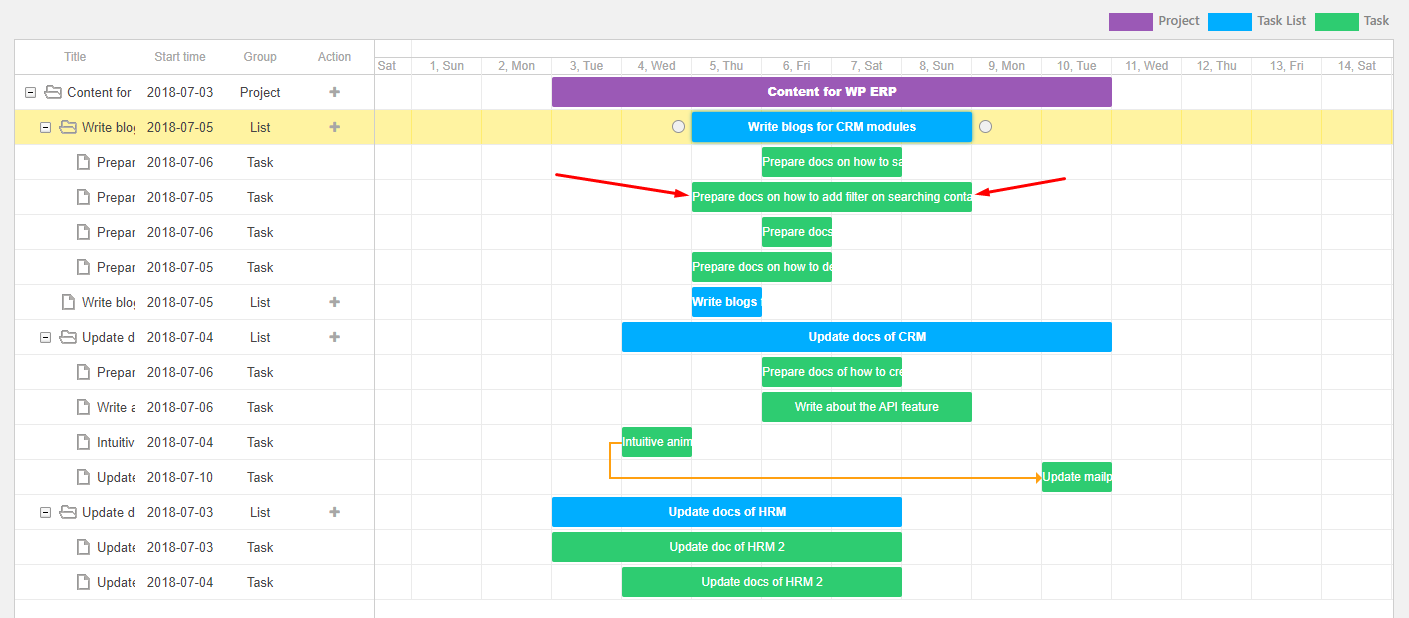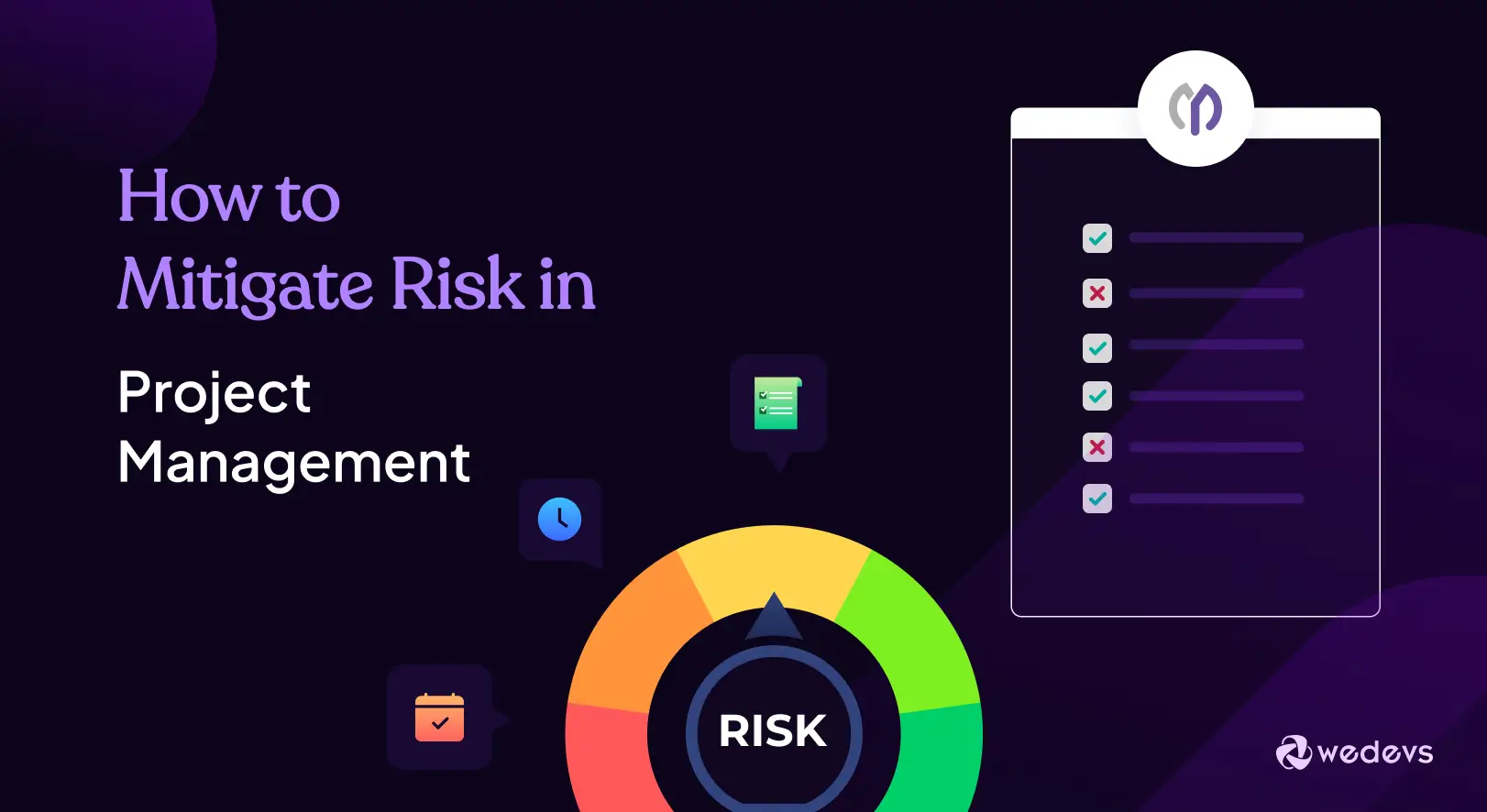
Common Project Management Challenges and How to Solve Them
Project management plays a vital role in the success of any business initiative. It helps teams stay organized, meet deadlines, and deliver quality results within budget. Without a proper project management process, even a great idea can fail to produce the expected outcome.
That is why companies invest in skilled managers and structured workflows to keep projects on track. But no matter how well you plan, challenges often show up during execution. Deadlines may shift, communication may break down, or unexpected costs may arise.
These problems can create stress for teams and sometimes put the entire project at risk. Recognizing these challenges early is the first step to overcoming them. In this blog, we will discuss the most common project management challenges that organizations face today and how to solve them.
What Are the Common Project Management Challenges? How to Solve Them
In this section, we'll discuss the most common project management challenges in today's age and how they can be solved with effective strategies. We hope that you'll find this discussion truly helpful and enjoyable. Let's get started!
1. Unclear Goals and Objectives

One of the biggest reasons numerous projects fail today is that the goals and objectives are not clear from the beginning. When team members are unclear about their objectives, their effort becomes disorganized. Some may focus on speed, others on quality, and some on adding extra features that were never planned.
This confusion creates wasted time, inefficiency, and frustration among team members. Without a clear target, people are unsure about priorities, which can delay decision-making and reduce productivity. Unclear objectives can also negatively affect stakeholders. Even if a project is completed on time and within budget, it may still fail to satisfy the client or the intended audience.
Check how to set realistic goals and achieve them with a project manager.
How to Solve It
- Define clear and specific goals using the SMART framework
- Document objectives in simple language
- Share them with all team members and stakeholders to ensure alignment
- Revisit goals when the project scope changes to maintain clarity and direction
2. Poor Project Estimates
Poor project estimates can disrupt an entire project before it even starts. If the time, cost, or resources are underestimated, teams will surely struggle to meet deadlines or stay within budget. Overestimating, on the other hand, can make a project appear expensive and lead to rejection.
Many poor estimates happen because planning is rushed, insufficient data is used, or assumptions are overly optimistic. Employees feel stressed and pressured when expected deliverables do not match the time or resources available. Inaccurate estimates not only affect budgets and timelines but also harm team morale.
How to Solve It
- Break projects into smaller tasks and estimate each individually
- Use historical data from past projects for guidance
- Consult experts and senior team members
- Regularly update estimates as the project progresses
3. Uncontrolled Project Expansion

This occurs when extra tasks or features are added to a project without proper planning. It often starts with small requests that seem minor, but gradually the project grows beyond the original plan. This uncontrolled expansion increases costs, delays timelines, and adds stress to the team.
The consequences of uncontrolled project expansion go beyond delays and cost overruns. Team members may become confused about priorities, work may be duplicated, and the quality of work can suffer. Clients may feel frustrated if the project deviates from its original objectives, and relationships may suffer as a result.
Explore the best project management strategies to stay ahead of time.
How to Solve It
- Clearly define the project scope from the start
- Use a change control process to approve any new requests
- Document all changes and analyze their impact on budget, timeline, and resources
- Communicate with stakeholders about the consequences of adding new features
4. Budget Constraints
Budget constraints are a challenge in almost every project. Limited funds force teams to make difficult choices, often compromising quality or scope. Unexpected costs during the project can also cause financial strain, making it hard to finish on time or maintain quality standards.
Financial problems create stress for managers, team members, and stakeholders. Managers may face pressure to deliver without adequate resources. Teams may have to prioritize speed over quality or skip essential work, leading to subpar results. Miscommunication about budget issues can lead to mistrust.
How to Solve It
- Create a detailed budget covering all costs
- Track expenses regularly and adjust forecasts as needed
- Maintain a reserve fund for emergencies
- Communicate openly with stakeholders about financial updates
5. Unrealistic Deadlines

Unrealistic deadlines happen when timelines are shorter than what the project requires. Clients or managers may push for faster delivery without understanding the workload. Teams then rush to meet expectations, which increases stress and reduces quality.
Unrealistic deadlines often result in overtime, mistakes, and poor morale. Even with extra effort, projects may still miss deadlines. The pressure can lead to burnout, conflicts, and a lower overall performance level. Use Gantt charts to track and manage project deadlines.
How to Solve It
- Set timelines based on detailed estimates and realistic expectations
- Break the project into smaller milestones
- Negotiate deadlines with stakeholders when necessary
- Consider phased delivery to meet critical deadlines without compromising quality
6. Poor Communication
Poor communication creates confusion, delays, and errors. When team members are not clear on what to do, they may duplicate work or miss important updates. Miscommunication can also harm collaboration and cause conflicts.
Remote or global teams face extra challenges due to cultural and time zone differences. Poor communication lowers team morale, as people feel ignored or excluded from key decisions.
How to Solve It
- Use collaboration tools like Slack, Trello, or Asana
- Hold regular meetings to clarify tasks
- Encourage open feedback and prioritize effective communication within the project culture
7. Resource Allocation Issues

Many projects fail because resources are not planned properly. One person may be overloaded while another has little to do. Sometimes teams lack the necessary tools, software, or personnel. Resource shortages slow progress and create frustration.
Projects may also suffer if key resources are unavailable at the right time. Poor resource allocation reduces efficiency and productivity. Check the ultimate guide to business resource management.
How to Solve It
- Plan resources carefully in advance
- Track workloads using resource management tools
- Cross-train team members to cover multiple roles
- Regularly review resources and adjust assignments as needed
8. Skill Gaps
Skill gaps occur when the team lacks the necessary technical or soft skills to complete the project efficiently. For example, a web development project may require expertise in coding, UI/UX design, and testing. If the team does not have experts in any of these areas, the project may face delays, errors, or poor quality output. Skill gaps are common in projects with new technology or methods unfamiliar to the team.
These gaps also affect collaboration and workload distribution. When only a few people have the required expertise, they become bottlenecks. Over-reliance on a small group can create burnout and frustration, and other team members may feel underutilized. Lack of skills may also reduce confidence among team members, making decision-making slower and increasing mistakes.
How to Solve It
- Identify skill gaps early in the project planning stage
- Provide training and mentoring to improve team capability
- Hire specialists or contractors for critical skills
- Use knowledge-sharing sessions to upskill the entire team
- Assign tasks based on strengths to ensure quality and efficiency
9. Lack of Accountability

Lack of accountability occurs when team members do not take responsibility for their assigned tasks. This leads to missed deadlines, low-quality work, and blame-shifting. When no one feels responsible, tasks may be delayed or ignored, and project progress slows down.
This problem also affects stakeholder confidence. Decisions may be postponed, and minor mistakes can escalate into larger problems. Over time, team morale suffers as motivated employees feel frustrated with those who avoid responsibility. Learn how to master in time management with project manager.
How to Solve It
- Assign clear roles and responsibilities for every task
- Use tools like RACI charts or project dashboards to monitor ownership
- Conduct regular progress reviews and provide constructive feedback
- Recognize and reward employees who consistently take responsibility
- Creating a culture of accountability improves trust and efficiency across the project
10. Stakeholder Disengagement
Stakeholders play a vital role in guiding projects, providing approvals, resources, and feedback. When stakeholders are disengaged, teams often lack direction and clarity. For example, a client who does not review designs on time can cause delays and require rework.
Disengagement also results in poor alignment between the project outcome and stakeholder expectations. Teams may proceed with assumptions, which can later conflict with what stakeholders actually want. Over time, this may lead to strained relationships, conflicts, or even project failure.
How to Solve It
- Keep stakeholders involved throughout the project via regular updates and reports
- Encourage their feedback at every stage and explain how their participation impacts success
11. Insufficient Risk Management

Risk is an inevitable part of project management. Insufficient risk management occurs when teams ignore potential threats or fail to plan for them. Common risks include delays, budget overruns, technology failures, or unexpected client requests. Learn how to manage risks in project management.
This can increase stress and create chaos. Projects without risk management are vulnerable to small issues turning into major obstacles. For instance, if a software project does not account for a potential server failure, a single technical glitch can halt the entire workflow.
How to Solve It
- Conduct a risk assessment at the start and update it regularly
- Maintain a risk register documenting potential risks, their likelihood, and impact
- Assign team members responsible for monitoring each risk
- Develop contingency plans to address high-impact risks and review them periodically
12. Managing Change
Change is common in projects, whether due to evolving client needs, new technology, or organizational shifts. Many teams struggle with change because it disrupts plans, adds new tasks, and creates uncertainty. Resistance may arise when team members feel extra work is unfair or unclear.
Unmanaged change can derail timelines and budgets. Teams may feel demotivated if changes occur frequently without explanation. Stakeholders may also be dissatisfied when changes are not incorporated properly, causing confusion and rework.
How to Solve It
- Introduce a formal change management process
- Clearly document all change requests, their impact, and required approvals
- Communicate why changes are necessary and how they benefit the project
13. Juggling Too Many Projects

Many managers and teams handle multiple projects simultaneously. When too many tasks overlap, focus is divided, and conflicts arise. Team members may struggle to prioritize, causing delays across all projects. Overlapping deadlines and shared resources create inefficiencies and stress.
Scheduling conflicts reduce productivity and quality. Important tasks may be delayed because resources are tied up in less urgent projects. Teams may feel overwhelmed, leading to mistakes, burnout, and dissatisfaction. In extreme cases, handling too many projects can result in project failure.
How to Solve It
- Prioritize projects based on importance, deadlines, and resource availability
- Assign dedicated teams to high-priority projects
- Use scheduling software to manage timelines and prevent overlaps
- Avoid accepting new projects if the team is already at full capacity
14. Internal Team Conflicts
Teamwork challenges occur when collaboration is weak or conflicts arise between team members. Personality clashes, unclear roles, or poor communication reduce efficiency and affect outcomes. Even highly skilled individuals cannot succeed without proper coordination.
Internal conflicts increase stress and slow progress. Small disagreements can escalate into larger problems if not resolved. Teams with low trust often fail to share knowledge or cooperate effectively. Motivation drops, and deadlines may be missed due to tension within the team.
Here's a list of common team management challenges and how to fix them.
How to Solve It
- Promote a culture of open and respectful communication
- Organize team-building activities to strengthen trust
- Define roles and responsibilities clearly to reduce overlaps
15. Uncertainty & Poor Decision-Making

Projects face uncertainty due to unexpected events such as client changes, market shifts, or resource issues. Poor decision-making under these circumstances can make problems worse, leading to delays, budget overruns, or project failure.
Uncertainty creates hesitation among team members, slowing progress. When leaders make decisions without data or input from experts, mistakes multiply. Teams lose confidence in management, and morale suffers, reducing productivity and focus.
How to Solve It
- Gather data and consult experts before making decisions
- Review outcomes of previous decisions to improve future choices
- This approach helps manage uncertainty effectively and keeps the project on track
Use WP Project Manager to Simplify Your Project Management Challenges
WP Project Manager is a feature-rich project management plugin for WordPress. It can help you plan, organize, and track the progress of your projects directly from the WordPress dashboard. You can assign tasks, set deadlines, and communicate with team members while managing multiple tasks simultaneously.

Take a look at the key features of the WP Project Manager plugin. This will help you get a clear idea of how the plugin can help you tackle numerous common project management challenges.
- Gantt Charts – Visualize project timelines and dependencies.
- Kanban Boards – Organize tasks in drag-and-drop style boards.
- Time Tracking – Log working hours to measure productivity.
- Task Management – Create, assign, and track tasks with deadlines.
- Project Milestones – Set milestones to measure progress and stay aligned with goals.
- Reporting & Insights – Get detailed reports on performance, progress, and workload.
- WooCommerce Integration – Manage orders from clients.
- Invoice Generator – Bill clients based on the projects you completed for them.
- Integrations – Works flawlessly with Slack, BuddyPress, Trello, WooCommerce, and more.
- Frontend Project Management – Manage projects directly from the frontend.
In addition to these, there are many more features of the WP Project Manager plugin.
How WP Project Manager Can Help You Overcome Numerous Common Project Management Challenges
WP Project Manager is a pioneering WordPress-based project management plugin. It has been serving users for more than 12 years. Right now, the development team is working hard to revamp the plugin, incorporate AI-powered support, and upgrade its existing features to make it more powerful and user-friendly.
Now, let’s take a look at how the WP Project Manager plugin can help you overcome different types of common project management challenges.
- Set clear goals and milestones
- Assign tasks to team members
- Create a Kanban Board and list tasks in several columns
- Monitor task dependencies and deadlines using the Gantt Chart
- Track the project progress with advanced reporting
- Ease communication by allowing people to discuss and share files
- Create unlimited projects and track them separately
Apart from these, there are many other tasks you can manage with this plugin. To explore more examples and get more ideas, visit our WP Project Manager archive page.
Final Takeaways!
Managing projects is never a straight road. Challenges like unclear goals, poor communication, or unrealistic deadlines can slow down progress and affect results. But with the right approach, these problems can be controlled before they become too big.
Successful project management depends on planning ahead, staying flexible, and keeping everyone involved in the process. Always set clear goals and success criteria before starting a project. Break down tasks into smaller steps and assign them deadlines. Keep communication open and transparent so that no one is left in the dark.
Monitor your budget and resources regularly, and update your plan if unexpected issues arise. Finally, remember that the right tools can reduce many common struggles. Using a project management tool like WP Project Manager can help you organize tasks, track progress, and improve collaboration.
Now, if you still have any questions in your mind, mention them in the comment box below. We'll get back to you very soon.